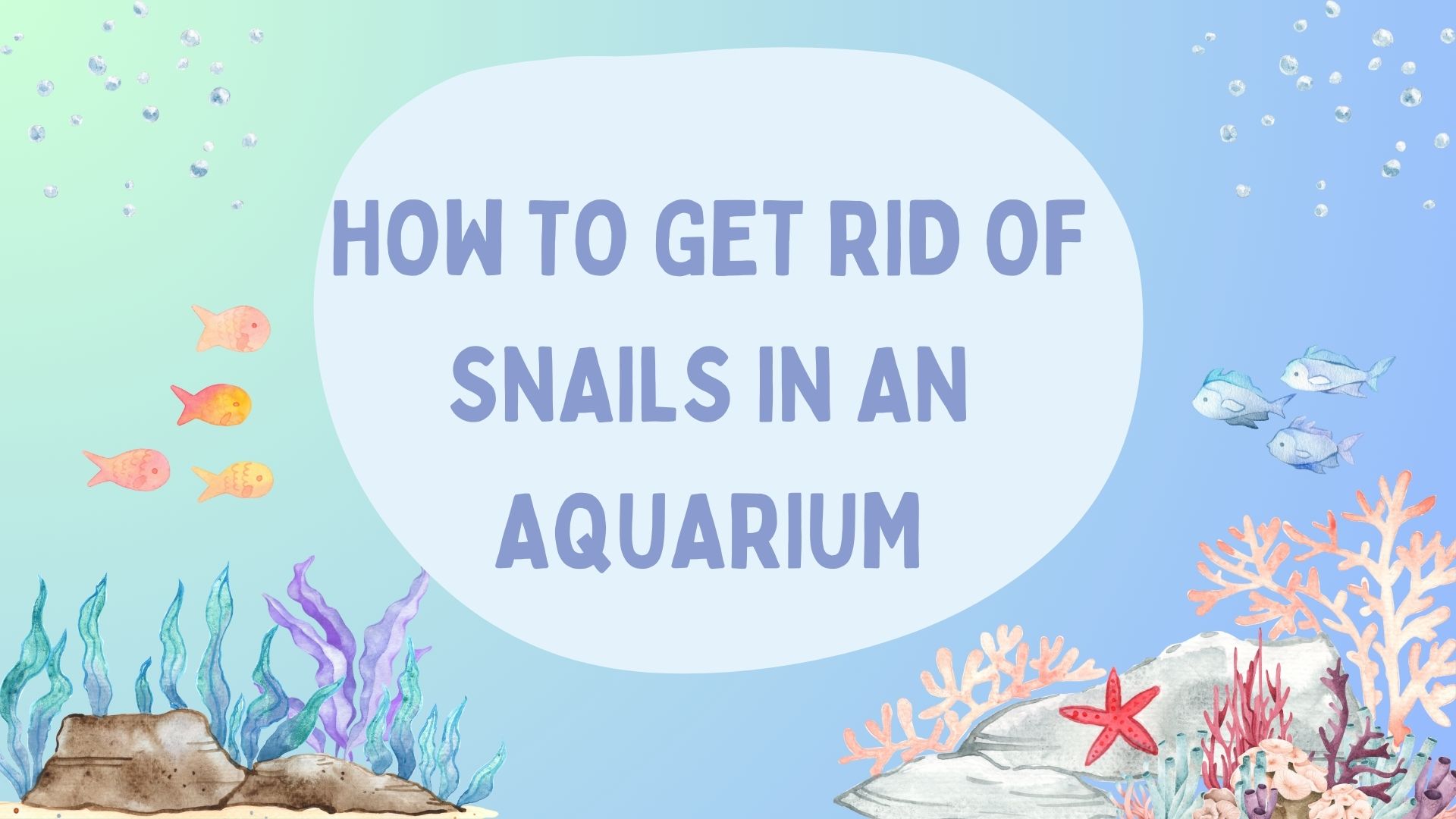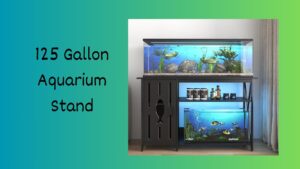If you’ve ever spotted unwanted snails in your aquarium, you know they can quickly become a problem.
There are several effective methods to get rid of snails in an aquarium, including manual removal, setting traps, and adjusting feeding practices.
I remember my own surprise when I first saw them multiplying, and I realized I needed to take action fast.

Cleaning the tank and being careful about what goes in can help prevent future snail problems.
By using simple techniques like trapping them with lettuce or introducing tissue culture plants, I managed to see a big change.
My aquarium became healthier and more enjoyable without those little pests.
In this article, I will share tried-and-true methods that have worked for me and many others.
Whether you’re dealing with a small number of snails or a full invasion, you’ll find helpful tips to restore your aquarium to its best state.
Contents
- 1 Table of Contents
- 2 Understanding Snails in Aquariums
- 3 Preventing Snail Infestations
- 4 Natural Removal Strategies
- 5 Chemical and Biological Solutions
- 6 Maintaining Balance After Removal
- 7 FAQs:
- 7.1 What causes snails to appear in an aquarium?
- 7.2 How to get rid snails in an aquarium without harming fish or plants?
- 7.3 Can overfeeding lead to a snail infestation?
- 7.4 Are snails harmful to aquariums?
- 7.5 Is there a natural way to get rid snails in an aquarium?
- 7.6 Can I prevent snails from entering my aquarium?
Table of Contents
Understanding Snails in Aquariums
Snails can play a big role in an aquarium. They are not just pests but can also provide benefits.
Benefits of Having Snails
Snails can actually contribute positively to an aquarium. They help clean up leftover food and algae, which keeps the tank tidy.
This is something I appreciate since it reduces my need for frequent tank cleaning.
Additionally, snails serve as a food source for some fish.
Some fish like to snack on smaller snails, adding a bit of natural behavior into my aquarium.
Having snails around can contribute to the overall health of my aquarium ecosystem.
Common Types of Aquarium Snails
There are several types of snails that I might find in my aquarium. Here are a few common ones:
- Bladder Snails: These are small and reproduce quickly. I often find them on the tank walls.
- Mystery Snails: These snails come in various colors and are slightly larger. They can add beauty to the tank.
- Nerite Snails: Known for their algae-eating abilities, these snails are quite popular. They are also less likely to breed in freshwater.
Each of these snails has unique traits that can benefit my aquarium in different ways.
Reasons for Snail Overpopulation
I’ve noticed that snails can sometimes population rocket in my tank. This usually happens for a few reasons.
One big reason is excess food. When I feed my fish too much, leftover food often attracts snails.
Another factor to consider is a lack of predators.
If I don’t have fish that eat snails, their numbers can quickly grow.
Also, if my tank has an imbalance of nutrients, it can create a perfect environment for snails to thrive.
Being aware of these factors helps me maintain control over my aquarium’s snail population.
Preventing Snail Infestations
To keep snails out of my aquarium, I focus on a few key strategies.
Quarantine New Plants and Fish
Whenever I add new plants or fish to my aquarium, I always quarantine them first. This step is crucial because unwanted snails often hitch a ride on these additions.
By isolating new items for at least two weeks, I can observe them for any signs of snails or their eggs.
If I find anything suspicious, I can deal with it right away before introducing them to my main tank.
Regular Maintenance Schedule
I make it a point to stick to a regular maintenance schedule for my aquarium.
This includes weekly water changes, cleaning the substrate, and wiping down the tank walls.
Keeping my aquarium clean minimizes the chances of a snail infestation.
During maintenance, I always check for snail eggs, especially in hard-to-see places like under decorations.
A clean environment also helps keep my fish healthy, reducing the chance of overfeeding, which can attract snails.
Controlling Algae Growth
Managing algae is another important part of my snail prevention strategy.
Algae provides a food source for snails, and if I allow it to thrive, I could end up with more snails.
I limit algae growth by keeping my aquarium well-lit but not overexposed.
Additionally, I use an appropriate cleaning crew, such as shrimp or certain fish, that eat algae without hurting my plants.
This helps maintain the balance in my aquarium and keeps snails from multiplying.
Natural Removal Strategies

Dealing with snails in my aquarium can be a challenge, but I’ve found some effective natural methods to manage their population.
Manual Removal
One of the simplest methods I use is manual removal.
With a pair of gloves, I gently pick up the snails I find. Sometimes, I use a net or tweezers to make it easier.
It’s important to check the crevices of decorations and plants since snails like hiding in those areas.
I usually do this during routine tank maintenance to keep the snail numbers down.
Manual removal is effective and doesn’t harm my other aquatic friends.
While it does take time and patience, I’ve found it to be a straightforward solution.
Snail Traps
Another helpful tactic is using snail traps. I’ve learned that buying or making a simple trap can be very effective.
One easy trap involves placing a piece of vegetable, like lettuce or cucumber, in the tank at night.
I clip it securely to the side of the aquarium. In the morning, I check for snails that may have gathered on the underside.
Additionally, there are specialized traps available in pet stores.
These traps attract snails and allow me to remove them without hassle. Using traps can significantly reduce the snail population over time.
Snail Predators
Introducing natural predators can also help keep snails in check.
I’ve considered adding species like yoyo loaches or assassin snails to my aquarium.
These fish and snails help control unwanted snail populations by eating them.
However, I research their compatibility with my existing fish first to ensure a healthy environment for everyone.
It’s essential to consider each predator’s behavior and habitat needs.
This way, I can create a balanced ecosystem in my aquarium while effectively managing snail populations.
Chemical and Biological Solutions

When dealing with snails in my aquarium, I often look to chemical and biological solutions for control.
Aquarium-Safe Treatments
There are various aquarium-safe treatments available to help manage snails.
One popular option is using copper sulfate. It effectively targets snails but requires careful dosing.
Too much can harm fish, so I always follow package instructions.
Another option is to use commercial products specifically designed for snail control, which usually contain natural ingredients.
These solutions often come with detailed usage instructions, making it easier for me to apply them safely in my tank.
I prefer to start with minimal treatment and monitor my aquarium closely.
If snails remain a problem, I might gradually increase the treatment while ensuring my aquatic life stays healthy.
Introducing Beneficial Bacteria
Beneficial bacteria can play a role in keeping snail populations in check.
By introducing products that contain these bacteria, I can enhance the natural balance of my aquarium.
These bacteria help break down organic waste, reducing the food supply for snails.
I often select beneficial bacteria that are safe for both fish and plants.
Once added to the tank, these bacteria will thrive, helping reduce nutrient levels that support snail growth.
To see the best results, I ensure my aquarium is properly cycled and the water parameters are stable.
This encourages the beneficial bacteria to multiply and effectively help manage my snail problem.
Maintaining Balance After Removal

After removing snails from my aquarium, it’s crucial to keep the environment stable.
Monitoring Water Parameters
I always make it a point to check my water parameters regularly.
Key factors include pH, ammonia, nitrites, and nitrates.
- pH levels: Aim for a stable pH, usually between 6.5 and 7.5 for most freshwater setups.
- Ammonia and Nitrites: These should stay at 0 ppm. High levels can stress fish and lead to other problems.
- Nitrates: Keep these below 20 ppm with regular water changes.
Using a reliable test kit helps me keep track.
If parameters get out of balance, it could create conditions that favor snail growth again.
I always take corrective actions quickly, such as adjusting filtration or doing partial water changes to maintain a healthy environment.
Population Control Practices
After I’ve cleared the snails, I focus on controlling their population to avoid new infestations.
- Limit food supply: I feed my fish what they can eat in a few minutes. This prevents leftover food that might attract snails.
- Introduce natural predators: Certain fish, like loaches or pufferfish, are known for eating snails. However, I make sure they will get along with my existing fish.
- Manual removal: I remain vigilant and continue to remove any snails I see. This helps keep their numbers in check.
FAQs:
What causes snails to appear in an aquarium?
Snails often enter aquariums through plants, decorations, or even gravel brought in from outside. They can quickly multiply if the conditions are right, such as excess food or algae in the tank.
How to get rid snails in an aquarium without harming fish or plants?
You can remove snails manually, introduce snail-eating fish or shrimp, or use a safe snail trap. Avoid chemical treatments as they may harm fish or plants.
Can overfeeding lead to a snail infestation?
Yes, overfeeding your fish can result in leftover food, which provides an abundant food source for snails, allowing their population to grow rapidly.
Are snails harmful to aquariums?
While some snails can help clean the tank by eating algae, an overpopulation can lead to imbalances and make the tank harder to maintain.
Is there a natural way to get rid snails in an aquarium?
Yes, adding natural predators like assassin snails or reducing their food supply by cleaning the tank regularly are effective and eco-friendly solutions.
Can I prevent snails from entering my aquarium?
Inspect plants and decorations thoroughly before adding them to your tank. Quarantining new items can also help prevent snail infestations.




